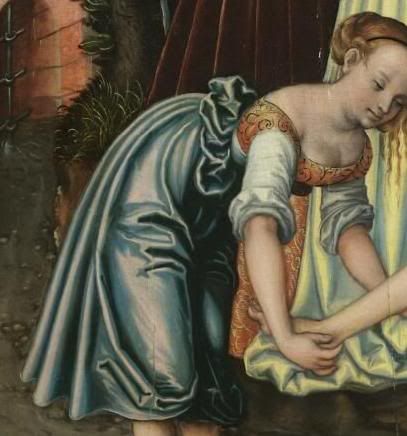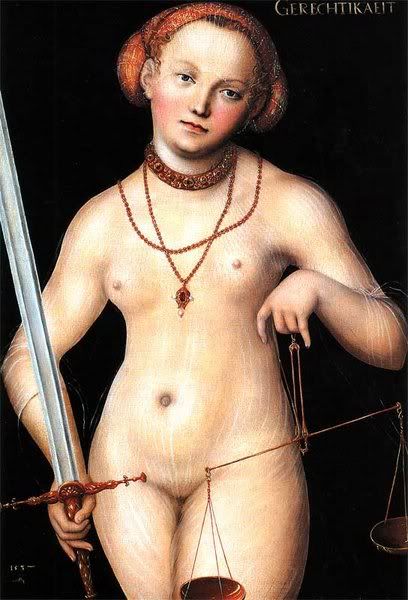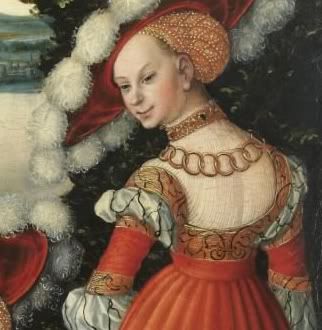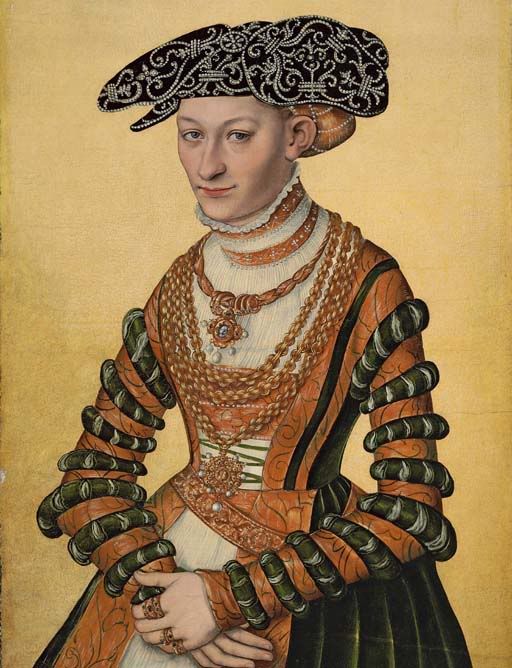Further Saxon Musing...
After some tea and a walk with the dogs the other day, I came to a realization (I am sure that kass_rants comments had something to do with it as well):
Sewing the bits of the dress together one step at a time (Brusttuck to shirt, stomacher to Brusttuck bottom, skirt to stomacher bottom) isn't any easier on the thin fabric of the shirts that we see covering the breast and upper backs we are looking at.
Ermmm....
OK.
So, back to the drawing board.
Going back to the inspiration image:

I started rethinking the shirt again. What we have hear appears to be a nice, sturdy shirt. It isn't thin and gauzy. It does not appear to be made of the same sort of material that we see in this image:

Or under clothing, such as in this slightly less transparent one:

But (as I believe kass_rantsmentioned in her blog), notice that the sleeves aren't as thin as the overall shirt?
This leads me to theory #2. Basically, take theory #1 - Brusttuck sewn to thicker shirt with sleeves, sewn to stomacher...etc - but add a 'dicky' or underlayer shirt of this lighter fabric. Why would I say 'dicky' at all - clearly my first image of the nekkid lady shows a full shirt? Well, the 'dicky' gauzy shirt top has been a pet theory of mine for awhile now. I don't discount that there may be a full shirt under there. but a dicky that is pinned or tacked in place to keep the various pleats and embroideries all nice and even seems to make sense to me too. It also seems like the care, starching and pressing of a smaller piece like this would make sense - and would help prevent staining by avoiding contact with the underarms and other 'sweaty bits'.
So maybe these are a sort of Halshemd...at least in some cases...
Of course, there are other images where this theory *clearly* does not apply. Nothing pieced about this one, except whatever style of Brusttuck is 'under there':

Sewing the bits of the dress together one step at a time (Brusttuck to shirt, stomacher to Brusttuck bottom, skirt to stomacher bottom) isn't any easier on the thin fabric of the shirts that we see covering the breast and upper backs we are looking at.
Ermmm....
OK.
So, back to the drawing board.
Going back to the inspiration image:

I started rethinking the shirt again. What we have hear appears to be a nice, sturdy shirt. It isn't thin and gauzy. It does not appear to be made of the same sort of material that we see in this image:

Or under clothing, such as in this slightly less transparent one:

But (as I believe kass_rantsmentioned in her blog), notice that the sleeves aren't as thin as the overall shirt?
This leads me to theory #2. Basically, take theory #1 - Brusttuck sewn to thicker shirt with sleeves, sewn to stomacher...etc - but add a 'dicky' or underlayer shirt of this lighter fabric. Why would I say 'dicky' at all - clearly my first image of the nekkid lady shows a full shirt? Well, the 'dicky' gauzy shirt top has been a pet theory of mine for awhile now. I don't discount that there may be a full shirt under there. but a dicky that is pinned or tacked in place to keep the various pleats and embroideries all nice and even seems to make sense to me too. It also seems like the care, starching and pressing of a smaller piece like this would make sense - and would help prevent staining by avoiding contact with the underarms and other 'sweaty bits'.
So maybe these are a sort of Halshemd...at least in some cases...
Of course, there are other images where this theory *clearly* does not apply. Nothing pieced about this one, except whatever style of Brusttuck is 'under there':
